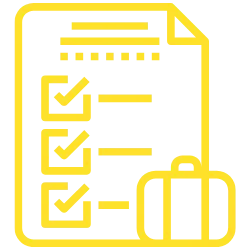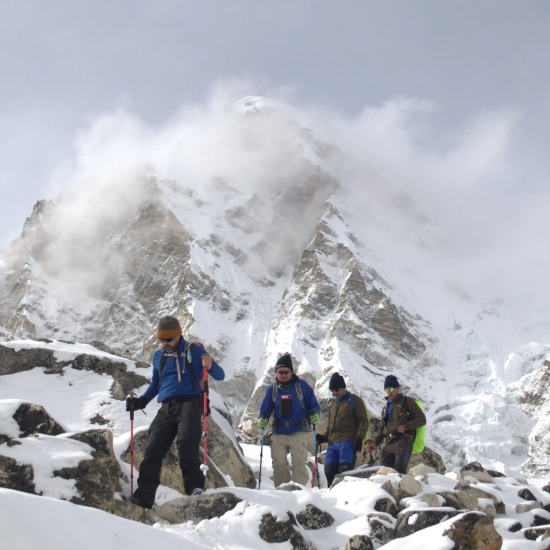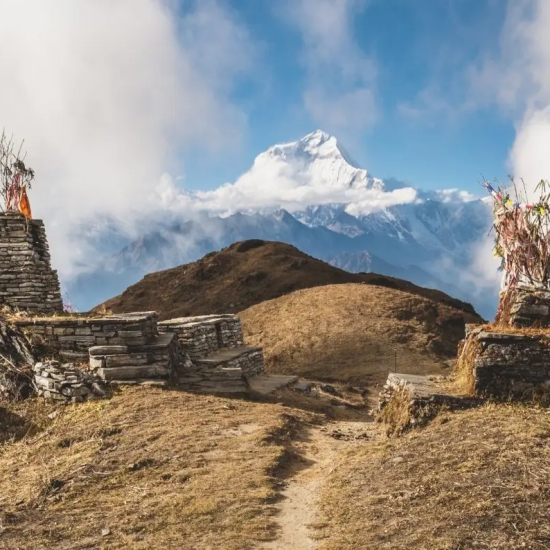The Gokyo Lake Trek is an extraordinary adventure through Nepal's Sagarmatha National Park, a UNESCO World Heritage Site nestled in the heart of the Everest region. This trek is celebrated for its breathtaking panoramas, showcasing four of the world's tallest peaks: Mount Everest, Lhotse, Makalu, and Cho Oyu.
Trekkers are deeply immersed in the unique Sherpa culture, experiencing their traditional lifestyle and warm hospitality as they journey through charming villages and high-altitude landscapes. The highlight of this trek is the destination: the Gokyo Lakes, a series of pristine, turquoise glacial lakes situated at elevations of approximately 4,700 to 5,000 meters. These lakes, including the sacred Dudh Pokhari, are a natural wonder and hold significant religious importance for both Hindus and Buddhists.
The adventure commences with your arrival in Kathmandu, Nepal's vibrant capital city. From there, a scenic flight transports you to Lukla, the gateway to the Everest region and the trek's starting point. The initial days involve trekking through verdant valleys, traversing suspension bridges over rushing rivers, and passing through picturesque Sherpa villages. Your ascent will gradually take you through diverse ecosystems, from lush forests to alpine meadows, with the majestic Himalayas drawing nearer with each step. Strategic acclimatization days are incorporated into the itinerary to facilitate your body's adjustment to the increasing altitude, ensuring a safe and enjoyable trekking experience.
As you venture deeper into the mountains, you'll reach Namche Bazaar, a bustling trading center and the last major town before entering the remote high-altitude wilderness. The trail then guides you towards the Gokyo Valley, where the stunning Gokyo Lakes await your arrival. Exploring the tranquil beauty of these glacial lakes is a central feature of the trek, as is the climb to Gokyo Ri, a nearby peak that rewards you with awe-inspiring panoramic views of the surrounding mountains, including Everest. The descent retraces your path through the captivating landscapes, allowing you to fully appreciate the memories of your remarkable journey through the Himalayas. The trek concludes with a return flight from Lukla to Kathmandu, leaving you with a profound sense of accomplishment and reverence for the natural wonders you have encountered.
About Gokyo Lakes and the Everest Region
Gokyo Lakes are a system of six primary lakes located in the Solukhumbu District of Nepal, within Sagarmatha National Park. The Gokyo Valley, home to these lakes, is an expansive and stunning area of natural beauty. The Everest region, which encompasses the world's highest peak, is characterized by its rugged terrain, deep valleys, glaciers, and towering mountains.
This region is home to the Sherpa people, renowned for their exceptional mountaineering skills, resilience, and rich cultural heritage. The region's distinctive combination of breathtaking scenery, rich cultural tapestry, and challenging trekking routes makes it a highly desirable destination for adventurers from around the globe.
Why Choose the Gokyo Lake Trek
The Gokyo Lake Trek presents a compelling alternative to the well-trodden path to Everest Base Camp. It offers equally magnificent mountain vistas, including close-up panoramas of Everest, but with fewer crowds, providing a more peaceful and intimate experience of the Himalayas.
This trek highlights the stunning Gokyo Lakes, the impressive Ngozumpa Glacier (the largest of its kind in Nepal), and the opportunity to climb Gokyo Ri for sweeping views of the surrounding peaks. It is an excellent choice for those seeking a trek that is both challenging and deeply rewarding, with incredible natural beauty and rich cultural immersion. Reasons to choose the Gokyo Lake Trek include:
Less Crowded Trails: Enjoy a more serene and tranquil trekking experience compared to the popular Everest Base Camp route.
Breathtaking Scenery: Immerse yourself in awe-inspiring views of turquoise lakes, massive glaciers, and some of the world's highest mountains.
Rich Cultural Immersion: Encounter the unique Sherpa culture and visit traditional villages, experiencing their way of life firsthand.
Challenging and Rewarding: Achieve a profound sense of accomplishment upon reaching Gokyo Ri and witnessing the spectacular panoramic vistas.
Alternative Ways to Do the Gokyo Lake Trek
While the most common way to experience the Gokyo Lake Trek involves flying from Kathmandu to Lukla and trekking from there, other options cater to those seeking a more extended or adventurous journey:
Trekking from Jiri or Salleri: Opting for this route extends the trek by 2-3 days, beginning at a lower altitude and allowing for more gradual acclimatization. The trail ascends gradually through lush forests, terraced fields, and Sherpa, Magar villages, providing a more immersive cultural experience and the chance to witness a wider variety of landscapes. You'll pass through villages such as Shivalaya, Bhandar, and Kenja, eventually merging with the main Lukla trail near Namche Bazaar.
Crossing the Cho La Pass: This challenging pass serves as a link between the Gokyo Valley and the Everest Base Camp area, enabling trekkers to combine both destinations into a single trip. The Cho La Pass (5,368m) is a high-altitude undertaking that demands a good level of physical fitness and careful acclimatization. From Gokyo, the trail ascends towards the pass, crosses it, and then descends towards Dzongla, where it connects with the Everest Base Camp trail. This allows trekkers to experience both the Gokyo Lakes and Everest Base Camp within a single, extended trek.
Renjo La Pass Trek: This pass provides stunning panoramic views of the Everest range and Gokyo Lakes. The Renjo La Pass (5,360m) is another high-altitude pass, offering a less frequented but equally rewarding route. Beginning near Namche Bazaar, the trail ascends to the pass, revealing breathtaking views of Everest, Lhotse, and the surrounding peaks, before descending into the Gokyo Valley. This route presents a captivating alternative way to reach Gokyo Lake.
Everest Base Camp Route: Some trekkers choose to combine a visit to Everest Base Camp with the Gokyo Lakes trek. This can be accomplished by first trekking to Everest Base Camp and then crossing the Cho La Pass to reach Gokyo, or vice versa.
Three Passes Trek: This strenuous trek combines the Cho La, Renjo La, and Kongma La passes, offering a comprehensive exploration of the Everest region. It represents a challenging but incredibly rewarding route that encompasses the Gokyo Lakes, Everest Base Camp, and stunning viewpoints.
These alternative routes provide more adventurous options and typically require more trekking days than the standard approach from Lukla.













 General FAQs
General FAQs  Best Time to Trek Gokyo Lakes
Best Time to Trek Gokyo Lakes  Trek Difficulty
Trek Difficulty -webp.webp) Trek Permit Required
Trek Permit Required  Gokyo Trek Guide
Gokyo Trek Guide  Health and Safety
Health and Safety  Packing and Prep
Packing and Prep  Gokyo Lakes Trek Cost & Expenses
Gokyo Lakes Trek Cost & Expenses  Accommodation
Accommodation  Weather & Temperature
Weather & Temperature  Electricity and Internet
Electricity and Internet 

























































